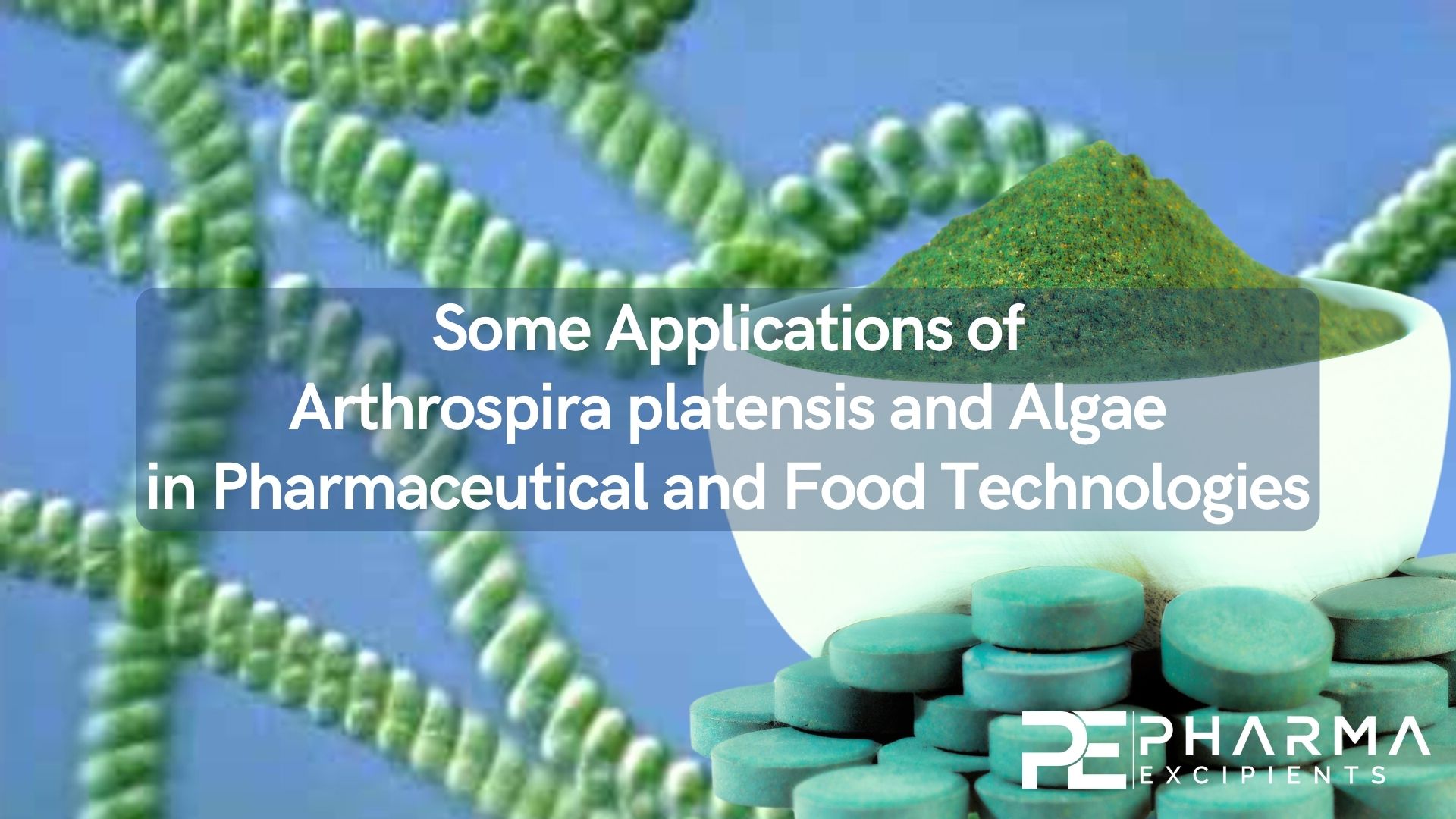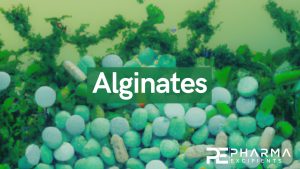Some Applications of Arthrospira platensis and Algae in Pharmaceutical and Food Technologies

Abstract
Algae, as well as Arthrospira platensis, have a wide range of biologically active constituents that determine different pharmacological properties. They are also the basis for developing various new nutritional compositions and supplements. This review summarizes the application of algae and Arthrospira platensis in pharmaceutical technology and food over the last 20 years with an emphasis on the beneficial effects of spirulina on human health, considering its nutritional value and therapeutic properties. A detailed literature review was conducted in scientific databases for over 20 years, such as PubMed, ScienceDirect, ResearchGate, and Google Scholar. Relevant information is summarized and interpreted. The permanent research process leads to the development of new preparations to inhibit the growth of cancer cells, reduce the aging of cells, increase the immune system’s efficiency, protect against infectious diseases, etc. In vivo studies show specific mechanisms of neuroprotection, appetite regulation, and prevention of neurodegenerative and psycho-cognitive pathologies. Algae and Arthrospira platensis, with their biologically active metabolites, are essential raw materials for producing various pharmaceutical products and functional foods with high nutrient content. Their use depends on the preservation of their biodiversity. In connection with their biosafety and the understanding of the biological effects on the human organism, it is necessary to continue their study.
Introduction
Algae are classified according to their size as microalgae and macroalgae and according to their pigment content in red (Rhodophyta), brown (Phaeophyta), and green (Chlorophyta). Some species are an essential source of oils and various other compounds and can also be used as a source of renewable energy [1]. Algae are interesting natural sources of new biologically active substances, with variable composition depending on geographical region, season,
environment, ecological conditions of their habitat, and others [2-4]. Some microalgae species produce a protein with high nutritional value and, hence, are used as an abnormal protein [5]; others can accumulate significant quantities of polysaccharides [6-7] with different properties. Species such as Dunaliella salina, Haematococcus lacustris, H. pluvialis, and Porphyridium cruentum are rich in pigments such as beta-carotene and astaxanthin that are of interest for the pharmaceutical, cosmetic, and food industries [8-10]. The European Union adopted a strategy aimed at the innovative development of the biotechnology sector, named the “Blue bioeconomy,” One of the strategy’s main directions is microalgae production as a source of precious compounds for human beings [11].
According to Regulation (EC), №258/97 of the European Parliament, “food and food ingredients consisting of or isolated from algae which have not been used to a significant extent” can be employed as new products. Interesting is the inclusion of algae in various “functional” foods for the absorption of fatty acids and improving digestion. Furthermore, due to their diverse and rich chemical composition, algae present many pharmacological properties such as antioxidant, anti-diabetic, antimicrobial [12], anti-tumor, anti-inflammatory [13], photoprotective, and antiviral that increase their potential value for the pharmaceutical industry [14]. According to Sprygin et al., [15] brown algae contain large amounts of polyphenols. Up to 50% of the dry residue of the S. pallidum extract is presented by polyphenols [16]. According to the authors, the species S. pallidum can be considered a promising raw material for developing highly effective anti-stress products with pronounced antioxidant properties. The conclusion is based on a study on the influence of biotic and abiotic stress factors, creating many superoxide and hydroxyl radicals and the subsequent peroxidation of lipids in cell membranes. The protective effect on the gastric mucosa of mice of an aqueous extract of S. pallidum has been proven [17]. Mhadhebi et al. and Fuente et al. [18-19] studied the anti-inflammatory activity of brown algae of Cystoseira crinita, Cystoseira sedoides, and Cystoseira compressa.
Recently, the relationship between nutrition and disease prevention has been increasingly sought [20]. There is a growing interest in developing nutritional supplements and functional foods [21-22], with many authors reporting the production of new soft drinks from rice bran, papaya, and algae or those obtained after algal fermentation [23-25]. Others observe an increase in polyphenolic levels of rye bread during the fermentation phase in the presence
of algae [26]. Adding algae to pâtés leads to lower oxidation of the fats contained in them and lower content of microorganisms [27]. Such pâtés show lower cooking losses and have a 50% softer texture than algae-free pâtés. Algae present antioxidant properties since they are rich in polyphenols. Selected seaweed species from the Danish coast have been studied in detail [28], and Polysiphonia fucoids species and all Fucus class species have been shown to have high free radical scavenging activity, high reducing power, can inhibit oxidation in a liposome model system, and can be used as natural antioxidants for food preservation. Algae contain substances that prevent the adverse effects of free radicals. These compounds, called antioxidants, and their impact on human health are summarized in Table 1.
Table 1. Antioxidant components of algae and their effect on human health.

Ganesan [14] has studied the antioxidant activity of three edible species of green algae of the genus Enteromorpha (E. compressa, E. linza, and E. tubulosa) from the northwest coast of India [14]. The authors note that extracts of these algae can be used as natural antioxidants or as ingredients in pharmaceuticals or food supplements. Some types of green algae contain cellulose with high surface area and inertness, and these properties make them a suitable alternative carrier for drug delivery. Strømme found that the cellulose obtained from Cladophora, after its purification and hydrolysis, forms agglomerates that are stronger than the commercially available analogs, and it is a suitable carrier for liquid pharmaceuticals such as nicotine [48]. Algae species such as C. fulvescens contain biologically active substances that are inhibitors of different enzymes: aldose reductase, choline esterase, and end products of glycation. The red alga (Rhodophyta) is rich in vanillic acid, gallic acid, and syringic acid [49], while brown seaweeds produce phlorotannins [50].
The organic substances have immunomodulating and hepatoprotective effects and can induce cancer cell apoptosis [51-53]. According to Wu, green algae have higher antioxidant activity than many terrestrial plants due to the higher content of non-enzymatic antioxidant complexes such as ascorbic acid, reduced glutathione, phenols, and flavonoids [54]. Some species, such as Halophila spp., are effective against malaria, several skin diseases, and the early stages of leprosy. Cymodocea spp. is used for cough and malaria [54]. Furthermore, some algae are consumed in salads, puddings, jellies, and soups by the population of Myanmar [55]. Scientists rank cyanobacteria (blue-green algae) as one of the oldest and most primitive life forms of nearly 4 billion years. The primary pigments in them are chlorophyll and phycobiliproteins, such as allophycocyanin (blue), C-phycocyanin (blue), and phycoerythrin (red). These pigments are responsible for photosynthesis and capture the light in the spectrum’s green, yellow, and orange parts.
In recent years, the interest in cyanobacteria is because they exist in any environment, such as hot springs, salt marshes, and moist soils, do not require fertile soils or clean water, have rigid cell walls that protect them from the outside world, and maintain homeostasis [56]. These species are susceptible to accumulation in photoreactors, where it is possible to maintain continuous optimal conditions. They are characterized by high productivity per unit area compared to other photosynthetic organisms or higher plants. Due to the same habitat conditions in the bioreactor, a relatively constant mineral, fatty acid, sterol-, and polyphenolic composition is achieved.
Spirulina has recently gained popularity and is a nutritional supplement for astronauts in NASA space missions. One kg of spirulina has the nutritional value of 1000 kg of fruits and vegetables [57].
This review summarizes the applications of algae and spirulina in pharmaceutical technology, cosmetics, and food over the last 20 years with an emphasis on human health.
Download the full article as PDF here: Some Applications of Arthrospira platensis and Algae in Pharmaceutical and Food Technologies
Ivaylo Pehlivanov, Galia Gentscheva, Krastena Nikolova, Velichka Andonova, Some Applications of Arthrospira platensis and Algae in Pharmaceutical and Food Technologies, Volume 14, Issue 2, 2024, 32, Scopus Author ID 14631065000, Received: 4.02.2023; Accepted: 19.03.2023; Published: 3.02.2024
Read more on Alginates here:



